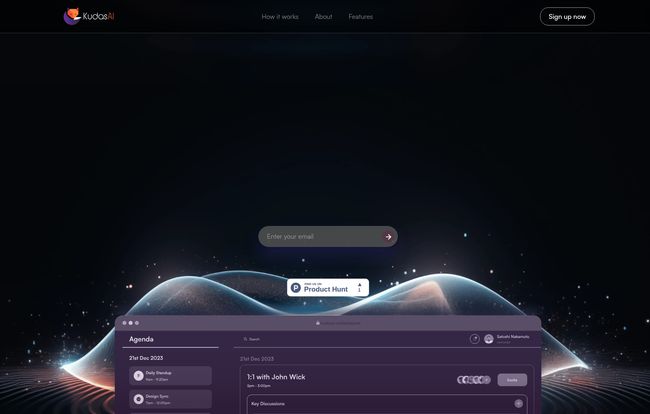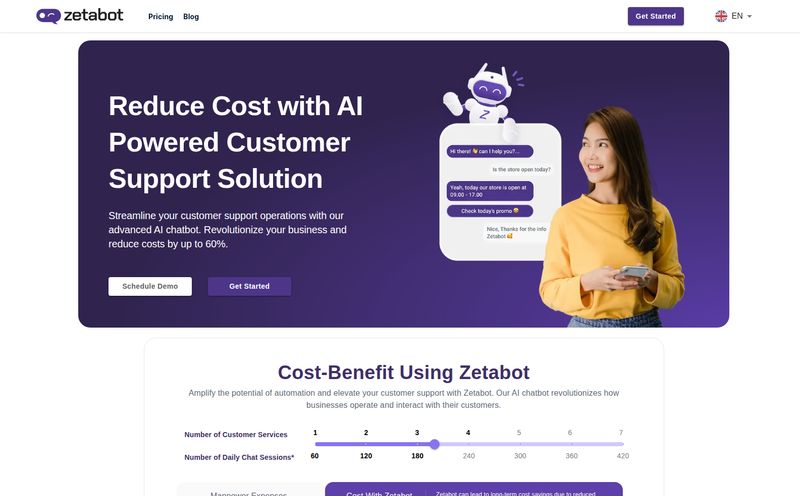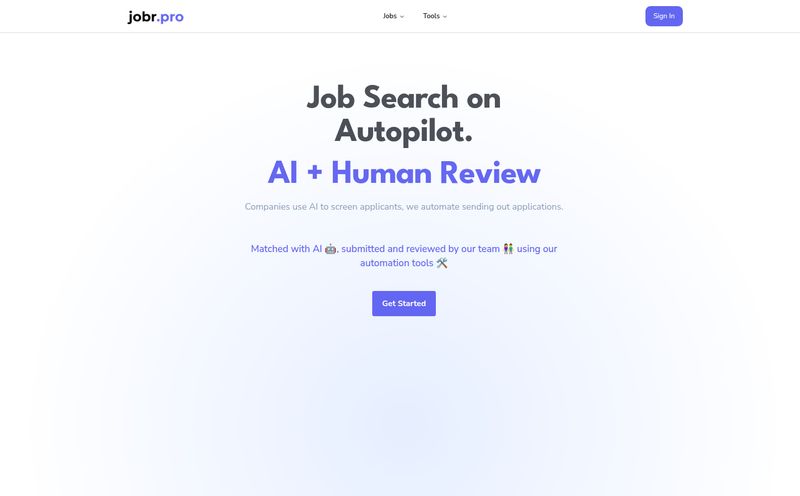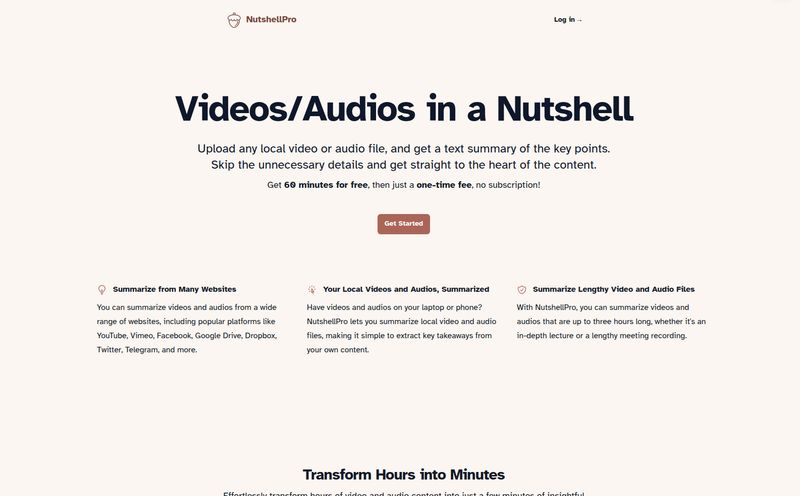If I had a dollar for every time I've sat in a "quick" daily stand-up that dragged on for 45 minutes, I'd probably own a small island by now. The world of Agile and Scrum is built on communication, but so often, our meetings become black holes of productivity. Someone's frantically trying to type notes, another person's trying to remember what was decided last Tuesday, and half the team is just trying to look engaged while secretly refining a user story in another window.
It's the dirty little secret of project management: our meetings, the very things meant to align us, are often what drain us the most. So when I stumbled upon a tool called KudasAI, my cynical SEO-brain immediately perked up. Another AI-powered productivity tool promising to save the world? Sure. But this one felt... different. It's aimed squarely at the heart of Agile team pain points, and I had to see what it was all about.
So, What is KudasAI, Really?
Okay, cutting through the marketing fluff. KudasAI positions itself as an AI-powered productivity tool specifically for Agile teams. But that's a bit vague, isn't it? Think of it less as just a transcription service and more like a dedicated, intelligent moderator for your meetings. Its main gig is to listen in on your team's conversations—your daily stand-ups, your retrospectives, your chaotic backlog grooming sessions—and pull out the important stuff.
The website says it's "Built by Product teams for Product teams," and you can kind of feel that. It's not just about getting a wall of text after a meeting. It’s about turning scattered verbal ideas into structured, actionable items. It aims to automate the boring parts (like note-taking and task refinement) so your team can focus on the smart parts (like, you know, actually solving problems).
The Features That Genuinely Caught My Eye
I've seen a hundred tools that transcribe audio. That's not new. What makes KudasAI interesting is how it packages its features together to solve a very specific workflow problem.
Automated Notes and Objective Summaries
Have you ever been the Designated Note Taker? It's the worst. You're either typing so fast you miss the nuance of the conversation, or you're participating so much you forget to type. KudasAI completely removes that role. It generates summaries of the meeting, identifying key points, risks, and decisions. And because it's an AI, the summary is objective. No more notes colored by one person's interpretation of what was important. It's just what was said. This alone is a pretty big deal for team alignment.

Visit KudasAI
AgileFlow and Serious Task Management Integration
This is the killer feature, in my opinion. They call it 'AgileFlow'. During a meeting, your team can verbally agree on a new task or a change to an existing one. KudasAI understands this, and you can apparently use voice commands to refine that task—flesh out the user story, add acceptance criteria, whatever—and then instantly send it to your project management tool. Imagine discussing a bug, defining the fix, and having the JIRA ticket created and assigned before the meeting even ends. No more "I'll write that up after the call" follow-up work. That's a massive time-saver.
Universal Search is Your Team's Collective Brain
This one is just plain cool. KudasAI creates a searchable archive of all your meeting conversations. Ever had that moment of, "Wait, why did we decide to go with this API? I know we talked about it in Q2 but I can't find the notes..."? With KudasAI, you can just search for it. It uses what they call "Hybrid Search algorithms" to let you query your team's entire conversational history in seconds. It’s like having a perfect, searchable memory of every decision your team has ever made. The potential for reducing repeat conversations and onboarding new team members with this is huge.
How This Actually Changes the Game for Agile Teams
It's all about reclaiming time and brainpower. The website claims it can reduce time spent in meetings by 15 minutes per hour, or reclaim 30-40% of time lost to unproductive tasks. I don't know how accurate that is, but I believe it. When you're not mentally juggling note-taking, task creation, and trying to remember old decisions, you are free to actually engage. Your retrospectives can become more honest, your stand-ups more focused, and your planning sessions more creative. It transforms meetings from an administrative chore into a genuine collaboration session. And by plugging directly into tools like JIRA or Asana, it smooths out the friction between talking about work and doing work.
The Not-So-Shiny Bits: A Dose of Realism
Alright, no tool is perfect. As much as I'm intrigued by KudasAI, there are a few things to consider. Based on the product and my own experience with these kinds of platforms, here's where the bumps in the road might be:
- AI Dependency: Could a team become too reliant on the tool? Maybe. If the AI makes a mistake in a summary or a task, you still need humans to catch it. It's an assistant, not a replacement for critical thinking.
- The Setup Hurdle: Integrating any new tool into an established workflow takes effort. You'll have to connect it to your calendar, your meeting software, your project management platform, and get the whole team onboard. It's probably not a 5-minute job.
- Learning Curve: While it seems intuitive, there's likely a learning curve. Getting comfortable with voice commands to refine tasks or learning how to best use the universal search will take a bit of practice.
These aren't deal-breakers, but they're real-world considerations. You don't just flip a switch and get 40% of your time back. It takes some investment.
The Million-Dollar Question: What Does KudasAI Cost?
And here we hit our first major snag. I went looking for the pricing page, ready to analyze the tiers and see if it was a fit for small teams or purely an enterprise play. And what did I find? A big, fat "Page Not Found" error. Yep, the link is a dud.
What does this mean? In my experience, this usually points to one of two things. Either they are so new they haven't finalized their public pricing, or they are operating on a purely enterprise, "Contact Sales" model. The prominent "Contact Sales" button on the homepage strongly suggests the latter. This means pricing is likely custom and based on your team's size, usage, and specific needs. So, no easy answer here, you'll have to get on a call with them to find out.
FAQs About KudasAI
- Is KudasAI just for teams using the Agile methodology?
- It's definitely designed with Agile ceremonies in mind—stand-ups, retros, etc. But the core functions of automated note-taking, summary, and task creation could benefit any team that has a lot of collaborative meetings. Its heart is in Agile, though.
- What tools does KudasAI integrate with?
- The site mentions "leading Project Management tools." You can bet this includes heavy hitters like JIRA, Asana, and probably others like Trello or ClickUp. For a specific list, you'd have to ask their sales team during a demo.
- How does KudasAI handle data privacy and security?
- This is a huge question for any AI tool that listens to your internal meetings. The site mentions "cutting-edge privacy," which is a good sign, but you should absolutely do your due diligence. Ask for their security documentation and privacy policy before letting it into your company's private conversations.
- Can I try KudasAI for free?
- There's no visible "Free Trial" button. The main call-to-action is to sign up or contact sales, which usually means the sales process involves a personalized demo rather than a self-serve trial. So, a 'try before you buy' scenario would likely be arranged through a sales representative.
- How is this different from Otter.ai or other transcription tools?
- The key difference is the focus on actionable outcomes for project management. While tools like Otter.ai are excellent for transcription and basic summaries, KudasAI is built to deeply integrate with the Agile workflow, specifically turning conversational points into structured tasks within your PM software. It's less about the transcript and more about what you do with the transcript.
Final Verdict: Is KudasAI Worth a Demo?
Despite the missing pricing page, I have to say I'm pretty impressed by the concept. KudasAI isn't just throwing AI at a problem; it's targeting a very specific, very real source of pain for countless development and product teams. It seems to understand that the goal of a meeting isn't a perfect transcript, but a clear, aligned, and actionable path forward.
If your team is constantly getting bogged down in meeting admin, re-hashing old decisions, or losing great ideas because no one wrote them down, then yes. I think KudasAI is absolutely worth scheduling a demo for. It might just be the AI colleague you've been waiting for—one that takes the notes so you can get back to work.



